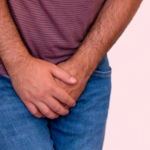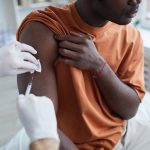Medically reviewed by
What are fordyce spots?
Fordyce spots are small (1-5 mm) pale spots that can be found on your penis and scrotum. They may also occur on your lips and the inside of your cheek.
Fordyce spots are usually more obvious when the skin is stretched, so you might notice them more when you have an erection or when you are warm and your scrotum is loose.
Fordyce spots are a type of sebaceous gland (small glands usually associated with hair follicles that produce sebum, the oily substance that helps to protect the skin). They are a normal part of your body.
About 4 out of 5 people have Fordyce spots on their genitals and/or mouths. They usually first appear at puberty.
Causes of fordyce spots
Fordyce spots are a normal part of your body. They are not a cause or consequence of disease. Fordyce spots are not contagious.
Subscribe to our newsletter

Diagnosis of fordyce spots
People often mistake Fordyce spots as a sign of sexually transmitted illness, and some sexually transmitted infections can look like Fordyce spots in the early stage of infection.
Your doctor will be able to tell the difference between Fordyce spots and other lumps and bumps that might occur on your penis and scrotum.
Fordyce spots treatment
Fordyce spots don’t need to be treated because they’re a normal part of your body.
If you’re bothered by the appearance of your Fordyce spots, it’s possible to have them removed through surgery, freezing, burning or laser treatment.
Health effects of fordyce spots
Fordyce spots are not associated with any health problems. Their appearance may be a cause of concern, but you can feel reassured they’re completely normal and most people have them.
What to do about fordyce spots
Some sexually transmitted infections can start off looking like Fordyce spots. If you notice new spots or they change in appearance, see your doctor straight away for proper diagnosis (and treatment if necessary).













